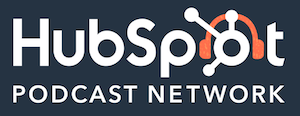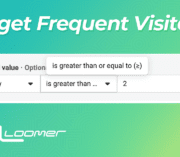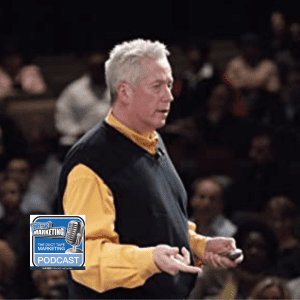The Best Way To Communicate With And Convert Your Website Visitors
The Best Way To Communicate With And Convert Your Website Visitors written by Kyndall Ramirez read more at Duct Tape Marketing
Marketing Podcast with Ben Congleton
 In this episode of the Duct Tape Marketing Podcast, I interview Ben Congleton. Ben is the Chief Executive Olarker (CEO) and co-founder of Olark Live Chat. For the last 13 years, he’s helped thousands of organizations communicate with visitors on their websites, including many small businesses.
In this episode of the Duct Tape Marketing Podcast, I interview Ben Congleton. Ben is the Chief Executive Olarker (CEO) and co-founder of Olark Live Chat. For the last 13 years, he’s helped thousands of organizations communicate with visitors on their websites, including many small businesses.
Key Takeaway:
How can you effectively serve your customer? How can you wow them? How can you show them that you actually care? Real-time communication. Website live chat has evolved an incredible amount since its inception. In this episode, CEO and co-founder of Olark, Ben Congleton, talks about the building of Olark and how they’ve differentiated themself in such a competitive industry.
![]()
![]()
Questions I ask Ben Congleton:
- [1:21] Would you say Olark was really early on in the live chat space?
- [1:51] What you did do in your previous life that had you want to start a chatbot company?
- [3:27] What was startup life like in 2008?
- [5:16] Was there what was the point where you started to say, “I think this is gonna work”?
- [7:22] How has chat evolved from a consumer behavior standpoint?
- [11:49] What is the emergence of AI doing to the live chat space?
- [14:38] I’ve noticed a number of the chat-related companies are really focused on driving people to SMS/text – where do you stand on that?
- [18:02] What role does a chat play for somebody that might have sight or hearing impairments that might make the traditional web not as navigable?
- [20:15] You alluded to a few things you’re working on – what’s coming down the pipeline on the roadmap?
- [23:09] Where can people connect with you?
More About Ben Congleton:
- Olark
- Connect with Ben on LinkedIn
- Follow Ben on Twitter: @jaminben
Take The Marketing Assessment:
Like this show? Click on over and give us a review on iTunes, please!
John Jantsch (00:00): This episode of the Duct Tape Marketing Podcast is brought to you by Content Is Profit hosted by Louis and Fonzi Kama, brought to you by the HubSpot Podcast Network. Discover the secrets and strategies of how your business can achieve the frictionless sale. They talk about frameworks, strategies, tactics, and bring special guests to bring you all the information you need in order to turn your content into profit. Recent episode, The power of just one big marketing idea and How to get it really brings home this idea that instead of chasing the idea of the week, really lock in on one big idea to differentiate your business that can make all the difference in the world. Listen to Content Is Profit wherever you get your podcasts.
(00:54): Hello and welcome to another episode of the Duct Tape Marketing Podcast. This is John Jantsch. My guest today is Ben Congleton. He’s the chief executive o Larker and co-founder of O LA Live Chat. For the last 13 years, he’s helped thousands of organizations communicate with visitors on their websites, including many small businesses. So Ben, welcome to the show.
Ben Congleton (01:18): John, it’s a pleasure to be here.
John Jantsch (01:21): So we were talking before we got started, the space website chat bots, you know, we’re gonna get into all that, but OAR was really early on, like maybe before anybody,
Ben Congleton (01:32): Right? We were early, we’re back when it was technically hard to do. I think things had gotten a lot easier since then. And you know, there’s a lot of people in the space, but I think, you know, as a company that hasn’t raised a lot of money and is kind of focused on being that growing small business, we’re still here. We’re still at it and there’s a lot of exciting things we’re working on.
John Jantsch (01:51): What did you, I’m curious what you did in your previous life that had you say, I’m gonna start a website chat company.
Ben Congleton (01:58): That’s a good story. It’s, there’s like the long version and short version of that story. So I’ll try to condense it down for you. The quick version of the story is in 2019 99, 19 98, I started a web hosting company. Okay. And back then there was just a couple of live chat providers on the market. In fact, one of them was this Israeli company called Human Click. And Human click ended up getting bought by live person and taking and becoming the technical backend for everything the live person has done. So all their engineering is now based in Israel At that time they discontinued all the good SMB solutions. So it was only like really kind of unstable, janky p p things that weren’t very good. And so I had that experience in the late nineties and then 10 years later I had this consulting firm and still had the web hosting company kind of going and was looking around at projects to do and decided to go after failing at a couple of other ideas and looked at like, Oh, let’s look at chat again.
(02:55): And this was 2009, 2008 and not a, a lot had changed in the last 10 years. It’s still basically the same five players. They’re all focused on enterprise Fortune 500 Comcast. And I wondered like, hey, now that we’ve gained like a little bit of skill, can we go back as if in a time machine and build that tool that we needed 10 years ago? And, and I think we did a pretty great job of that. We built something that was so easy to install that anyone could put it on a website. I think arguably we kind of defined how chat works on the internet today and that’s, that’s a big accomplishment.
John Jantsch (03:27): So go back to I guess that 2008, you know, what was startup life like at that point? I mean, you know, everybody’s envisioning the like teams of engineers sitting around, but I’m getting the sense it was like you and another
Ben Congleton (03:41): Coder. Yeah, I mean I’m, I am, I have a computer science degree. I got a master in computer science, but I’ve always been stronger on the business side. And so in 2008, I mean, it’s funny right, because that was another kind of recession year, right? But as someone who was,
John Jantsch (03:54): Wait, another reception we’re not going,
Ben Congleton (03:57): Well, I guess we have
John Jantsch (03:58): Recession yet,
Ben Congleton (03:59): But not yet. Right? But all right, well we’ll see what happens. But point being is, yeah, it was just me and a couple friends and we had just been in, in college and I was working on a PhD and I had this consulting firm on the side I, this hosting company kind of running. And it was really just, you know, hacking away on Sunday and just working on just writing code, trying to create an MVP before people had terms for things like that. And getting something out the door that we could start playing with and showing the people. And it was basically a completely free product for a year before we had any monetization scheme. Cause I’m pretty bad at, uh, monetization and revenue. Like I would say the things that I care about are product and solving problems. Like that’s what gets me up in the morning.
(04:42): That’s what I’m excited about. That’s, you know, the thing that I get to do basically every day. Cuz you know, you build a company, right? You’ve been at this for a while. Like you talk to people and they’re like, Oh, like why haven’t you sold this thing? Or whatever. I mean, I think about it like I get to work with really smart people working on important problems that I care about doing meaningful work. That’s all I really want to do in this life. And I think that if I can do that and make impact for our customers and you know, innovate and do new things, like I’m pretty happy. And so yeah, we got some excited things that we’re working on now that, you know, keep me up at night and that’s fun. That’s a fun place to, Well
John Jantsch (05:17): Don’t get ahead of me cuz I’m gonna ask you that one. But was there, what was the point where you, and maybe you haven’t got there yet,
Ben Congleton (05:28): Yeah, that’s a really funny story. Maybe we haven’t got there yet. Like I am, I’m like the most optimistic person, but I’m also like deeply fearful, right? Like I, you know, I mean I think that we’re, as a small business, as a provider in this space up against giants with millions and millions of dollars. Like I think that, I don’t know, I don’t think anyone’s safe. I mean look at Slack, right? Slack is a product that was arguably super successful and they still felt they had to go sell it to Salesforce in order to have a long term home. And so I think that like, I, I don’t, the macro level story is like, I don’t think you’re really ever there. At least I don’t feel that way. Some of their companies might, from a like early days standpoint, I mean we were right outta college, We were used to making like $30,000 a year and that was good.
(06:13): Like, that was like, you got the fellowship, right? That was what you’re getting paid as a grad student. And I think this guy’s now make 50 to kind of account for inflation. You know, I, I think when we got to the point where we could hire our first employee was a pretty big milestone cuz OAR was o it was kind of a weird company. Like we, we went through our Combinator in 2009. We raised a total of $85,000. That includes the money at Y Combinator gave us, So Y Combinator gave us 25,000 and then we raised another 60 from just like a friend’s dad, an early Google guy and like a couple of people we met through the YC network. And so we had a little bit of money so we could pay rent and buy food and we just kind of sat there in a house and did that.
(06:54): The old version of the start story where you don’t need a bunch of money and just sat there in a house and built things for our customers and shopped at Costco. Like, that was basically what we did for the first couple years. And when we got to the point where we could hire our first employee, like that was pretty exciting. We would have this graph like that, we’d get emailed out every day, be like, we hit this line, the graph we’re gonna go buy grill so we can sit out back and grill
John Jantsch (07:22): That’s awesome. So, so other than the fact that you’ve now got a lot of competitors in the space, how has chat evolved maybe even from a consumer behavior standpoint?
Ben Congleton (07:32): That’s a, it’s a really interesting question to ask. I think arguably I want, I don’t wanna say that the well has been poisoned, but I think that the act in the early days, right? When you got a little chat box in that low right hand corner and what we innovated was really saying where there’s gonna be a person there to talk to you on the other end of it. Yeah. A lot of folks like would just have that and you’d click and be like, Oh no one’s here but we were, ours would always be accurate. And so we really wanted the set the expectation that like as a customer, if someone says they’re there, they’re there and you can go like talk to them and get a question answered and that’s better than the phone. It’s better than waiting on hold. It’s, you know, a direct line to someone who can actually help sell you the good, solve your problem.
(08:10): And I think that what has happened over time is that more and more folks have added little things in that low right hand corner that don’t actually get you to a person. And I think that is damaging holistically to user behavior across like these things. Cuz they’ve become, like many folks have kind of turned them into little qualification bots and there’s nothing wrong with a qualification bot, but there is something wrong from my opinion of a qualification bot that there’s never gonna be a person there because some folks kind of act like there’s a person there. And I know like Drift is pretty well known company with space. I think they basically coined the idea that you could have like a little thing over here that never rowed to a human being. And and it’s so easy, so much easier to sell that because you don’t have to staff it and it’s just like magic. But it actually changes all the customer behavior cuz you aren’t gonna answer 10 questions if you can’t actually talk to a person on the other end of it. So that’s one challenge that the space is facing.
John Jantsch (09:09): It’s interesting, it’s, it’s a tool that was actually created as a service that a lot of people have turned into friction.
Ben Congleton (09:18): Mm-hmm
John Jantsch (10:22): Uh, yeah, I mean sometimes it’s a challenge to find the phone number on the website.
Ben Congleton (10:27): Yeah, no I think, I think that most have disappeared and if you’re lucky, at least get a chat that’ll route you to a person occasionally. I mean it’s short term versus long term playing.
John Jantsch (10:36): And now a word from our sponsor, marketers are a key part of business. Um, funny I would say that, right? But that’s because we own the conversation with our customers and having tools that help us have meaningful conversations with our customers at scale, all while maintaining a personal touch is our white whale point solutions can be easy to set up but difficult to manage and maintain and all of a sudden you find yourself with disconnected teams and data leading to poor customer experience. Yikes. HubSpot is an all in one CRM platform that is impossible to outgrow and ridiculously easy to use, meaning you never have to worry about it slowing you down. That’s because HubSpot is purpose built for real businesses. Businesses that test and learn, pivot and push and do it all again next quarter with customizable hubs and tools that you can add or subtract as you grow. HubSpot is ready to help you stop chasing the white whale and start connecting with your customers at moments that matter most. Learn how HubSpot can help your business grow better @ hubspot.com.
(11:49): So we’re talking about the evolution, but you know, what’s the emergence of ai? You know, and you know, bot technology which is often driven by aai sometimes. Yeah. Uh, you, what’s that doing to this space?
Ben Congleton (12:02): Well I think it’s interesting. I think I went to this talk I know a couple years ago south by Southwest and had like, you know, the guy who created Siri in a couple other AI folks talking. And I mean, what I like to do is use a thought experiment. Well just imagine that Google has the best stuff, right? Imagine that Google and Apple and these billion dollar account in Microsoft, right? They basically have the best AI tech that you can possibly get and they’re building personal systems with it. Now imagine how well that stuff actually works in practice, right? Yeah. Imagine like the breadth of questions you can ask Siri Now that’s basically stay the art, that’s as good as it’s gonna get. Everyone else is selling a dream of trying to get to that thing using tech from open ai, which is funded by Microsoft, using tech from Google and Amazon and of dialogue flow and all this various like NLP processing.
(12:55): So I would argue the state of the art is still getting there and there’s a lot of people that are selling the dream and you can probably go look at like live person stock price, which is down probably sub 20% is is down 20% from where it was like maybe five years ago or something like that. So, so like they’ve been betting on this. I think that the uh uh, there are some cool stuff happening with ai but arguably most implementations of AI at this point is basically intent detection, which means I can take something you write in text.
John Jantsch (13:28): Yeah. Did you, did you say yes or no?
Ben Congleton (13:30): Oh
John Jantsch (13:31): You said yes. Well no, I was gonna say it’s
Ben Congleton (13:33): Yes or no, but it can get more, It can get better than that. It can get better, right? It could be like, what are you asking about? Right? Like if I say like, you know, I’m looking for a new car, it can probably determine, I’m looking for, I’m looking for a car in a more confident way than just looking for the keyword car. So that that works pretty well. And that’s some, you know, AI tech support by Google and Amazon and that that’s more or less state art, what chatbots are using today. And then you can also build trees where you take, you know, a series of questions and you move through ’em. You can think of ’em as kind of like phone trees with a better ui cuz it’s like way easier to like navigate through a series of questions. You can have phone trees where some nodes in those tree are a plain text answer and that can solve and that stuff can solve real business problems. And I think that if you have that kind of interaction then you have context around what’s actually going outside of your company. Like are folks available? Are there experts on this topic? You know, is this person coming in on a high value ad campaign? Maybe I don’t wanna run ’em through this like complicated flow and I wanna just get ’em over to a salesperson in sap. You can build some pretty great stuff.
John Jantsch (14:38): Let’s talk about the emergence of SMS in this equation. Mm-hmm
Ben Congleton (14:54): Think it’s a use case question. I think it’s like what, what are you trying to achieve with that goal? I understand why marketers like it, right? Because marketers want another channel that they get folks to listen to you on and email is saturated, right? Right. SMS is not yet saturated. It’ll get there, you know, we’ll have better spam prevention et cetera. You’re already seeing some of the stuff happening on phones today, right? Of making it harder for unknown numbers to text you and handshake stuff required to use that SMS stuff. So I think that the, the main reason from a business standpoint is businesses like it because now I got a phone number and I have a way of getting your attention, right? That’s the main value for the business, the consumer, but don’t can kinda benefit a little bit.
John Jantsch (15:37): I’m there on the phone anyway, you know, doing it.
Ben Congleton (15:40): Yeah. So the consumer side, it’s a little bit, it’s interesting, right? So if I’m on a mobile device, right, like SMS is gonna probably be a better way for me to communicate with your business than over than over the web
John Jantsch (15:51): Chat form or quite
Ben Congleton (15:52): Honestly, right? Yeah. But if you’re doing b2b, you’re probably not on a phone doing it. Like a consumer I think is primarily like it’s a good consumer bio like Facebook who seems to have lost a lot of our trust, right? Like had their little floating thing, their floating messenger, messenger widget in the corner. It was basically accomplishing that same SMS goal, you know, is mostly adopted inside e-commerce for transactional thing again because marketers really like the ability to target based on the information you get from filling out that. So I think that, I think that that use of SMS and the use of Facebook are largely driven by marketer behavior rather than consumer behavior. But I think that there are some use cases where SMS makes a ton of sense. I think when you’re dealing with online offline transactions, it makes a ton of sense.
(16:42): Like if I’m hiring a, like a service that’s gonna come to my house or a plumber or things like that. I think if I’m buying things on a website and I just want to have some for a one off transactional situation as a consumer, I don’t think SMS makes a ton of sense as a business. Obviously I wanna be able to reengage you via the SMS channel. So it’s, yeah, it’s interesting. I think when O Ark looks at this we, you know, we’re working towards having way better SMS support. I think the use cases that we care mostly about are the longer term relationship use cases for sms. Though I think that there’s plenty of marketing tools for just blasting out an sms. Sure. We wanna be the tool that helps you create those lasting relationships and like a little bit less automated, a little bit more personal, that type
John Jantsch (17:26): Of, so, so where you really staked your claim is the person that’s gonna put this tool on the website with the idea that you’re gonna build relationships and have pretty much real time conversations with a real human being.
Ben Congleton (17:40): That’s what I want to do. I mean that’s what I care about. Yeah, like, I mean I think ultimately like what’s the point of business? I think it’s a series of relationships that you have with others and you want those relationships to be positive. And so that’s the part of the problem that I wanna work on as an individual. And I think that that’s the, that’s the company that, you know, founders a Boots job founder. I’ve gotten the luxury of being able to build up around me.
John Jantsch (18:02): Yeah. Let’s talk about it. Accessibility a little bit. Yeah. What role do does a chat play for somebody that might have site or hearing or you know, other issues that make the traditional web not as navigable? Mm-hmm
Ben Congleton (18:19):
(19:04): This is a channel that I think arguably anyone should be able to use to communicate with anyone. And so you’re trying to figure out, you know, if you’re vision paired, like how do you communicate using this channel? If you’re using a screen reader, how do you communicate using this channel if you are, you know, mobility impaired, like how do you simplify that UI and that navigation inside of it? And I think that list goes on and on. So there’s a lot, there’s a lot there that you can do that we can control inside that little box no right hand corner. Yeah, we can’t control everything else that’s on your website, right? But I think we can control that channel and we can also allow you to hire folks on the other end that uh, can staff it that have lower vision. And I think that’s kind of the journey I’ve been on recently where I realized how few of these tools that may meet accessibility standards, like there’s a bunch of standards out there, the most well known is W C A G and you can go look that up, but a lot of standards around that.
(19:59): But to actually make the operator experience accessible well, so you can actually hire folks who are visibility impaired or you know, it’s kind of inside that space to me. Like that’s when you start creating some real wins and that’s sort of like the direction I’m trying to take this company.
John Jantsch (20:16): So you alluded to stuff you’re working on, maybe you just talked about it there, but what’s coming for oar if you’re out there looking at, Well,
Ben Congleton (20:23): There’s a couple things that I think are new and exciting for oar. Like one is we’re kind of on this journey right now to be a leader in accessible communication. I can’t say we’re anywhere near that today, but that’s kind of where I want to take the company. I think that we’re going to see over the next couple years a lot of regulation around accessibility. We’re seeing digital ADA already enforced. We’re seeing some legislation being passed in Europe and uh, I think there’s a real opportunity to not just check the boxes, but really show how far you can go there. So that’s one kind of 10 of where we’re headed. The other place that we’re headed in this is that, you know, we talked a lot about automation on this call and about, you know, say the art of ai. We’re interested in kind of doing more that we’ve done a lot of ai, we have a tier, it’s called our pro tier for O A C.
(21:08): And so we’ve worked with folks basically building, doing, I wouldn’t call ’em like custom bots, but a lot of tailor, like a lot of tailoring of that AI tech and machine learning tech to help people solve problems and make it simple for that user, be able to work with non-tech customers and really help them realize their vision. And I think that’s something we’ve been doing some of and we’re gonna be doing a lot more of. I love the concept of like if I, if someone can sketch something on a piece of paper like a workflow or a process, it should be that simple. That’s how easy it should be for someone non-technical to have their vision realized via automation. And then the third thing I think that’s going on is adding more channels. I mean, we’ve talked a little bit about sms. SMS is really on our list for the first additional little channel that we’re adding.
(21:49): We’ve been rebuilding our operator experience to make it not like a tacked on thing, but like a core piece of how alert communicates with folks. And as part of that operator work, we’ve also been investing heavily in accessibility to make it accessible. But once we get those initial pieces in place, you basically have, uh, I would call it like a, like an AI enabled user interface that is incredibly accessible that works multichannel. And that’s kind of, I think it’s kind of like where things need to go with the key piece being like there’s a human in the loop. We’re not just trying to build some system that you like, stick there and put in the corner. It just like magically builds relationships. Your
John Jantsch (22:25): Customers, you never have to, to talk to anyone again,
Ben Congleton (22:27):
John Jantsch (23:09): Awesome. Well Ben, thanks for stopping by the Duct Tape Marketing podcast. Do you wanna tell people or invite people where they can connect with you?
Ben Congleton (23:16): Yeah, you can. I’m pretty active on LinkedIn, so you can just add me on LinkedIn, say you saw me here cuz I got tons of requests. But if it’s coming in from John, like on or from John’s audience, I, I know you guys, I wanna talk to you so you can message me there. You can follow me on Twitter at Jam and Ben, um, or just, you know, drop by oar.com and talk to someone there and just ask for me like we’re staffed. We got people there. You know, I can pretty easy get in touch with for if you wanna chat more. Awesome.
John Jantsch (23:41): Well I appreciate you taking that time of your day to stop by and hopefully we’ll run into you one of these days soon out there on the road.
Ben Congleton (23:48): Absolutely, John, it’s been a pleasure.
John Jantsch (23:50): Hey, and one final thing before you go. You know how I talk about marketing strategy, strategy before tactics? Well, sometimes it can be hard to understand where you stand in that, what needs to be done with regard to creating a marketing strategy. So we created a free tool for you. It’s called the Marketing Strategy Assessment. You can find it @ marketingassessment.co Check out our free marketing assessment and learn where you are with your strategy today. That’s just marketingassessment.co. I’d love to chat with you about the results that you get.
Sign up to receive email updates
Enter your name and email address below and I’ll send you periodic updates about the podcast.
This episode of the Duct Tape Marketing Podcast is brought to you by the HubSpot Podcast Network.

HubSpot Podcast Network is the audio destination for business professionals who seek the best education and inspiration on how to grow a business.







